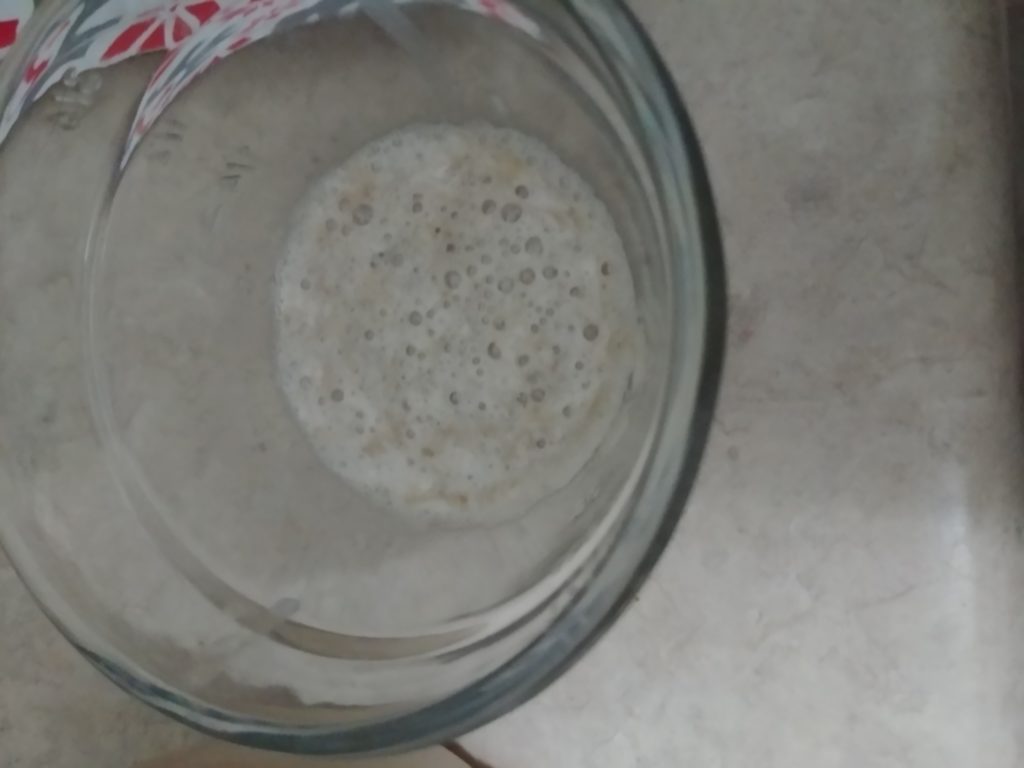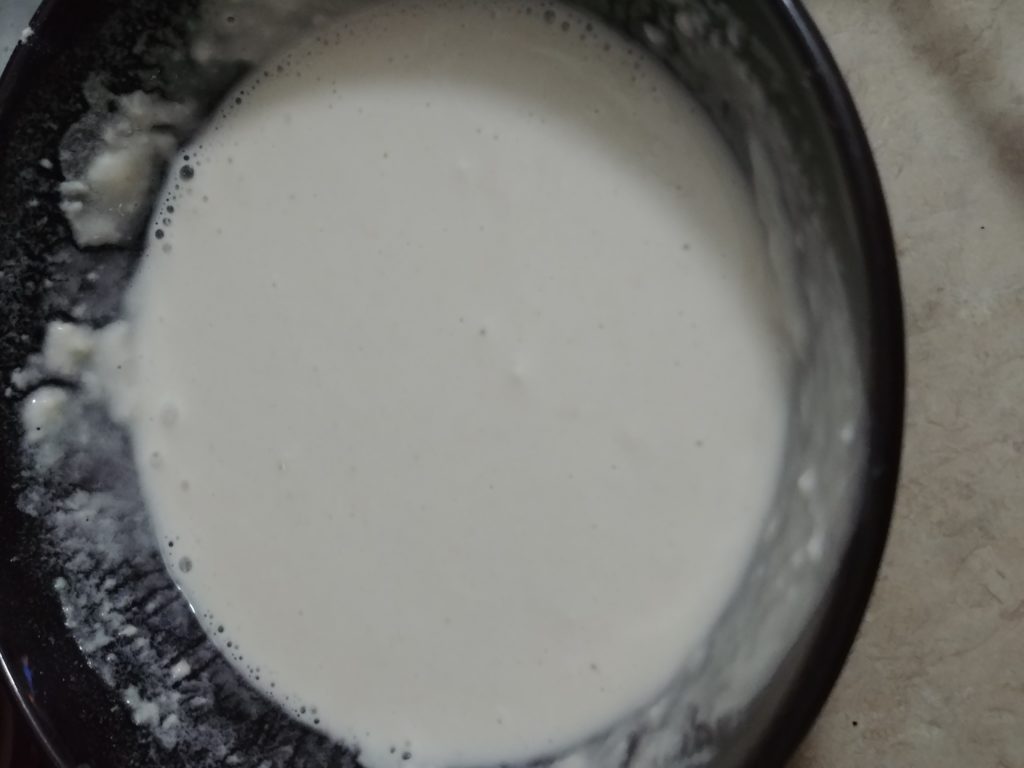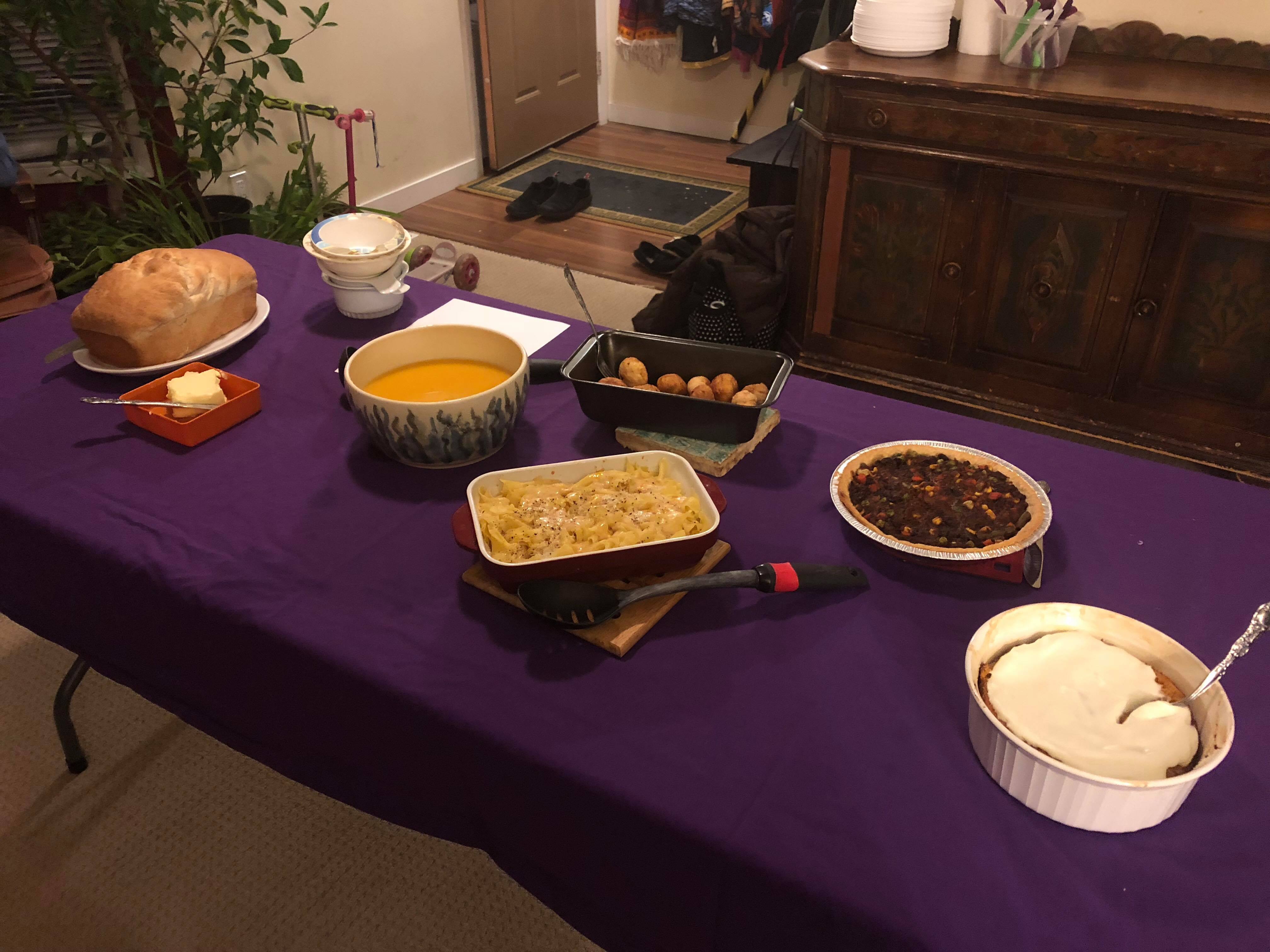This is something that I’ve wanted to try for a long time, and in January when my wife, Her Ladyship Kayleigh, was needing beer barm to do some baking seemed like a good time. This was all done back in January, but I only now got around to posting it.
She had some barm left over so I decided to see what I could do with it.
Sourdough was well known and used, as we see from An Anonymous Tuscan Cookery Book (late 14th early 15th century) and other sources, but there are also some recipes that call for yeast. Now I’ve always assumed they mean sourdough or barm, but in Ein sehr Künstliches und fürtrefflichs Kochbuch von allerley Speysen 1560 we see instructions on how to harvest yeast:
Little yeast cakes with grapes (raisins)
43.
Take beer yeast (barm) / and a half seidlin
wine yeast (wine slurry) / in a pot / that a mas
will go into / pour in lukewarm water
to full / stir well with a spoon
together / let it stand one night / then
strain the water from it in the morning / pour
some warm water on it / stir again
all together / with a cook spoon /
let it stand for one hour or two / strain the
water from it / so that the yeast stays
at the bottom of the pot / take warm water / salt
as a light water-based soup / take the yeast /
that is in the bottom of the pot / with a spoon
the white therefrom / that the yeast
will be nice / put it in a salted water /
you must have four spoons full. The saltes
water should also be boiled / let it
cool / so that it is lukewarm / put the yeast
in it / Take a bowl that is not to small /
put wheat flour in it / then stir the
yeast and the water together / strain
it through a little sieve into the
flour / stir it with a spoon all together /
Make the dough not too thin / it
should be thick / like a rolled out little
cake . Thus one works it / pound
it well / so there are no lumps inside / lay then
a spoon over above the bowl / cover with
a cloth over it / sit it on the oven / and give
warm heat / let it sit / so that
the dough rises / Take it next /
beat it again / put grapes (raisins) therein /
mix it well together / so that
the grapes (raisins) are mixed together /
do not pound it again / put it back on
the oven / cover over with the cloth
and spoon again / let it rise a
while / make some fat hot /
put warm watter in the pot / Take
the dough from the bowl / in a half
egg’s breadth / pat out the piece with
fingers / make it above like a pancake /
lay it in the hot fat / turn
over with a spoon / it should not
be brown / but rather white. So when you
want to lay them down / you must make your
hand wet in the water / otherwise the dough
will stick to the hands / Thus you may make good
little yeast cakes.
Ein sehr Künstliches und fürtrefflichs Kochbuch von allerley Speysen, translated by Jill Wheezul https://jillwheezul.livejournal.com/273712.html
The section we care about here is:
Take beer yeast (barm) / and a half seidlin
wine yeast (wine slurry) / in a pot / that a mas
will go into / pour in lukewarm water
to full / stir well with a spoon
together / let it stand one night / then
strain the water from it in the morning / pour
some warm water on it / stir again
all together / with a cook spoon /
let it stand for one hour or two / strain the
water from it / so that the yeast stays
at the bottom of the pot / take warm water / salt
as a light water-based soup / take the yeast /
that is in the bottom of the pot / with a spoon
the white therefrom / that the yeast
will be nice / put it in a salted water /
you must have four spoons full.
Ein sehr Künstliches und fürtrefflichs Kochbuch von allerley Speysen, translated by Jill Wheezul https://jillwheezul.livejournal.com/273712.html
Now to put that into context, here are some modern yeast washing steps from Billy B. at Homebrew Academy
Yeast Washing Steps
- Boil one gallon of water for 15 minutes.
- During the boil, sanitize the glass jars and funnel.
- Let the water cool for a couple minutes on the stove, and then pour into the large glass jar.
- Place the large jar in the refrigerator to cool.
- Siphon the beer off the yeast, either to bottle it or transfer to a secondary fermenter. Place the airlock back on the empty fermenter while it waits.
- Take the large jar of water out of the refrigerator and let it come up to room temperature.
- Pour the large jar of water into the fermenter, place the airlock back on, and shake it.
- Let the fermenter sit for 20 minutes so the trub can separate from the yeast and fall to the bottom. The yeast will be a milky white color, while the trub will be a darker brown.
- Pour the top layer (yeast and some beer) back into the large jar, trying to leave the bottom layer of trub behind.
- Cap the large jar and shake. Let it sit for 20 minutes.
- Similar to the pour from the fermenter, carefully pour the liquid from the large jar into the four pint size mason jars, trying to leave behind the dark matter on the bottom.
- Cap the mason jars and place them in the refrigerator. The yeast will settle to the bottom over the next few days.
It’s pretty similar. So, me being me, I decided to follow the 16th century version. And it kinda worked. I’m using top fermenting yeast as opposed to the bottom fermenting that the recipe calls for.
- Stir up barm with equal part lukewarm water
- let it sit overnight
- skim off the yeast, and mix it with more water
- Let it settle for a few hours
- Skim your yeast
- Use the yeast for bread

Starting barm 
Mixed up with water 
Settling 
Yep, that’s yeast on the top, I skimmed the yeast and did the same thing again 
After a two settlings I managed to get the yeast 
Yep, that’s the yeast 
It’s pretty active stuff, I probably should have moved quicker 
Time to make the sponge 
Sponge prepped, time to wait for action 
We have growth! I poured off the liquor and made bread, which of course I forgot to take a picture of
So: the good news, yes this works, you can extract the yeast from the barm and reuse it. I even baked a small loaf of bread with it. However, there’s some bad news. The process loses a lot of yeast, so you need to be starting with a substantial amount of barm. Also, while it does decrease the ale smell from the yeast it doesn’t get rid of it, that smell remains, so if you’re doing this to try to fully remove the ale smell from your barm it’s not going to work. Perhaps that’s why there’s the reference to mixing ale barm and wine slurry, that may do more to remove the ale smell from the resulting bread.
This wasn’t perfect, and I’d love to do some more experimentation with it some time, but it was a lot of fun and I learned more about yeast. Also, I want to use the next stuff to make a sourdough starter.



0 Comments